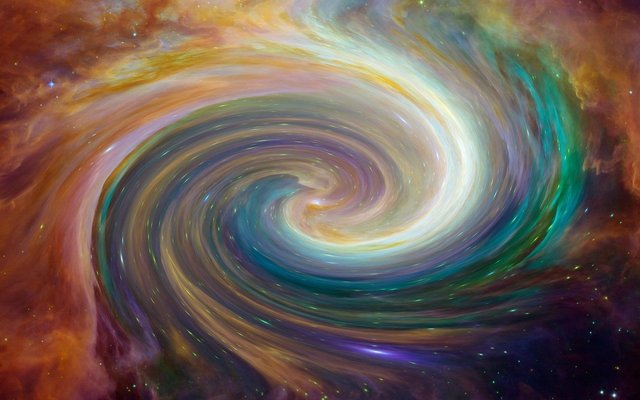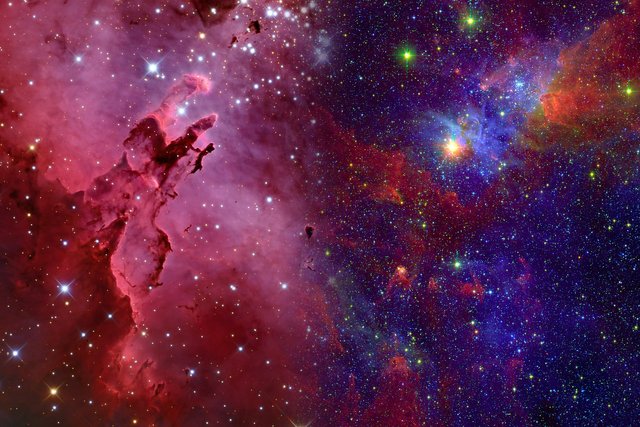The end of the universe - 3, the Milky Way galaxy, our constellation
The clear night sky is an endless treasure of beauty!
Isn't he in the sky?
Thousands of star sapphires are burning and extinguishing!
If you notice a little, you can see that a lighted road like light clear clouds has flowed through the middle of the sky.
This is our Milky Way galaxy.
All the stars seen with the naked eye and all the stars observed with the naked eye are members of this Milky Way galaxy.
Money
The English word ‘galaxy’ comes from the Greek word galaxias kyklos. If you do it in Bengali, it becomes - 'Chayapath Chakra'. Greek mythology says that when the goddess Juno was breastfeeding the baby Hercules, some of the milk from Juno's breast was sprinkled with finki, from which the galaxy was born.
According to Greek mythology, the goddess Juno splashed some milk while feeding the baby Hercules, giving birth to the Milky Way galaxy.
Hence its name is Via Lactea. Whose English synonym is Milky Way. Meanwhile, the Bengali term Milky Way has been changed to Akashganga.
Born
About 1385 crore years ago. The unimaginable temperature and unbearable pressure caused a landmark event, the Big Bang. Hydrogen and helium are formed within 3 to 1 million years of the Big Bang. These two atomic cosmic clouds were floating in space at that time. Gradually, billions of bubbles are formed by the gravitational pull inside the cloud. Under unbearable pressure, the bubbles produce a minimum temperature of 10 million degrees Celsius, and the hydrogen atom breaks down into helium. This process is called 'nuclear fusion'. This nuclear fusion releases huge amounts of energy. The bubbles turn into a single burning star. These galaxies are huge galaxies, including billions upon billions of stars. Galaxies come in many shapes and sizes depending on the speed of rotation. Galaxies that have higher rotational speeds on their own axes become like flattened plates. The rest also come in different shapes depending on the speed of rotation, some like eggs, some like spirals, some like spirals, some like random.
There are about 200 billion such galaxies in the visible universe. One of which is our Milky Way. The Milky Way is a spiral galaxy. It has a few curved arms like the blades of a table fan. There is disagreement about the number of arms. However, here are the main five arms:
Ma Norma arm
• Sagittarius arm
• Perseus arm
Scutum-Centaurus arm
• Outer arm
Our solar system is in a relatively small arm or ‘spar’ of the Milky Way. Its name is Orion spur.
What is this Milky Way?
The Milky Way Galaxy is flat like a disc or hard disk. Unimaginable huge distance from head to toe in this galaxy. Even if you travel at the speed of light, it will take about 1 lakh light years to reach the other end. Thickness is so deadly, a total of 1 thousand light years! The Milky Way galaxy contains an estimated 100 to 400 billion stars. The Sun is a middle class star among them. Some cosmic objects revolve around one of these stars. For example, there are seven mainstream planets, many asteroids, and comets orbiting our sun. The satellites are revolving around the planet again. This is the massive arrangement around a star, called the planetary system. And especially this arrangement of our sun and its surroundings is called solar system or solar system. Many systems have two stars orbiting each other. This is called binary system. Most of the binary systems in the Milky Way.
If our Jupiter was a little bigger, the solar system would also become a binary system. Astronomers have so far identified 500 planets in our Milky Way. And they're guessing that our Milky Way could have 10 to 100 billion planets.
Central Blackhole Office:
Now the thing is that no matter what the solar system, planetary system or binary system, they are not fixed. At the center of our galaxy is a monstrous black hole Sagittarius A *.
The monster is sitting in the center of the galaxy with a mass equal to about 4.2 million solar masses. All the stars in the entire galaxy, including their systems, are orbiting this black hole. The distance of our solar system from this black hole is about 26 thousand light years! And our solar system takes only (!) 240 million years to orbit this black hole! The Milky Way galaxy rotates on its own axis at a speed of 254 kilometers per second. Being relatively densely populated, the majority of the area near the black hole is inhabited by older and older stars. The oldest star in the Milky Way is Cayrel’s Star. And the age of this old man is approximately twelve and a half billion years.

